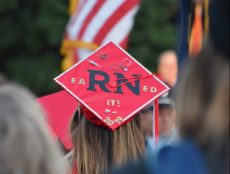
Articles
Editor’s Picks
When Personalized Learning Isn’t High-Tech: Some Solutions from the Better Together: California: Teachers Summit 2018
By Henry Kronk
August 03, 2018
Discussion around personalized learning typically revolves around the technology being developed to aid teachers in instruction. Tech leaders Mark Zuckerberg and Bill Gates have been funding efforts to develop the pedagogy through their charitable foundations. Using AI and adaptive algorithms stands as one of the most future-looking–and to some, unrealistic–methods of personalizing. “The real power of artificial intelligence for education is in the way that we can use it to process vast amounts of data about learners, about teachers, about teaching and learning interactions,” said Rose Luckin, a professor of learning-centered design at University College London, according to The Atlantic. “[It can] help teachers understand their students more accurately, more effectively.” That means logging data, tracking student progress, and in some cases, AI delivering educational content to students. But at the Better Together: California Teacher’s Summit this past week, many instructors presented personalized learning strategies that were specifically low-tech.
“One hack that I really like is to take notes in my planner,” said Sarah Kesty, a special education teacher at Castle Park Middle School in Chula Vista, CA. “Just today we were writing in our notebooks and I had the kids number their pages.” (Kesty’s class is currently in session.) “And you’d think for an 8th grader, that’d be pretty easy. But one of my kids got completely lost, had a really hard time organizing his pages, didn’t know where to write, started with content on the table of contents, it was a mess. That prompted me to note, ‘Next time the kids are busy, I’m going to pull this kid and give him a couple of support lessons in terms of how to look at structure and organizing his own space.’ Because something in his brain is clearly not letting him access that part of learning. But if I didn’t write it down in my planner, I’d forget. So it’s just keeping track of those things is really helpful for me.”

Better Together: California Teachers Summit Takes on Personalized Learning
The theme at this years’ conference was “It’s Personal: Meeting the Needs of Every Student.” Other teachers who gathered, presented, and listened at one of 31 sites throughout the state often used similar low-tech solutions to personalize learning. Kesty was impressed with an instructor who asked his learners to do a check in at the beginning of each class with a note on the smart board and discuss how they’re feeling with school and life in general.
“If a student checked in with something that looked negative, then he would say, ‘do you want to talk about it.’ And if the student yes, they would share their problems. And then he would open it up to the other students and ask them how they would solve the problem. And so it really empowers them to be peer coaches and problem solve out loud so it’s not the wah-wah-wah from a teacher, but it was coming from peers.”
Science Meets Art
There’s no doubt that the kind of personalized pedagogy that Kesty implements takes a lot of work. “It is a lot of logistics, I’m not perfect at it. Teachers are data-driven, but instead of data coming from assessments, it comes from my interactions and observations and my assessment. It’s a more of a holistic look for me when I personalize learning.”
That’s the part of the equation that is typically missing from more high-tech personalized solutions. In Kesty’s view, there’s nothing wrong with using new technology to support personalized learning. But instruction can’t be compromised in the process.
“Especially in special ed, I’ve seen a lot of plug and play where the teachers don’t interact with kids, they just monitor compliance. Sometimes that turns students away from learning. Even though it might be acceptable by some standards, we still need to look at the role of the teacher so it’s not an instance technology taking over instruction.”
Nearpod, a lesson creation platform, helped arrange this interview.
Cover Image: Marion Michele, Unsplash.









No Comments